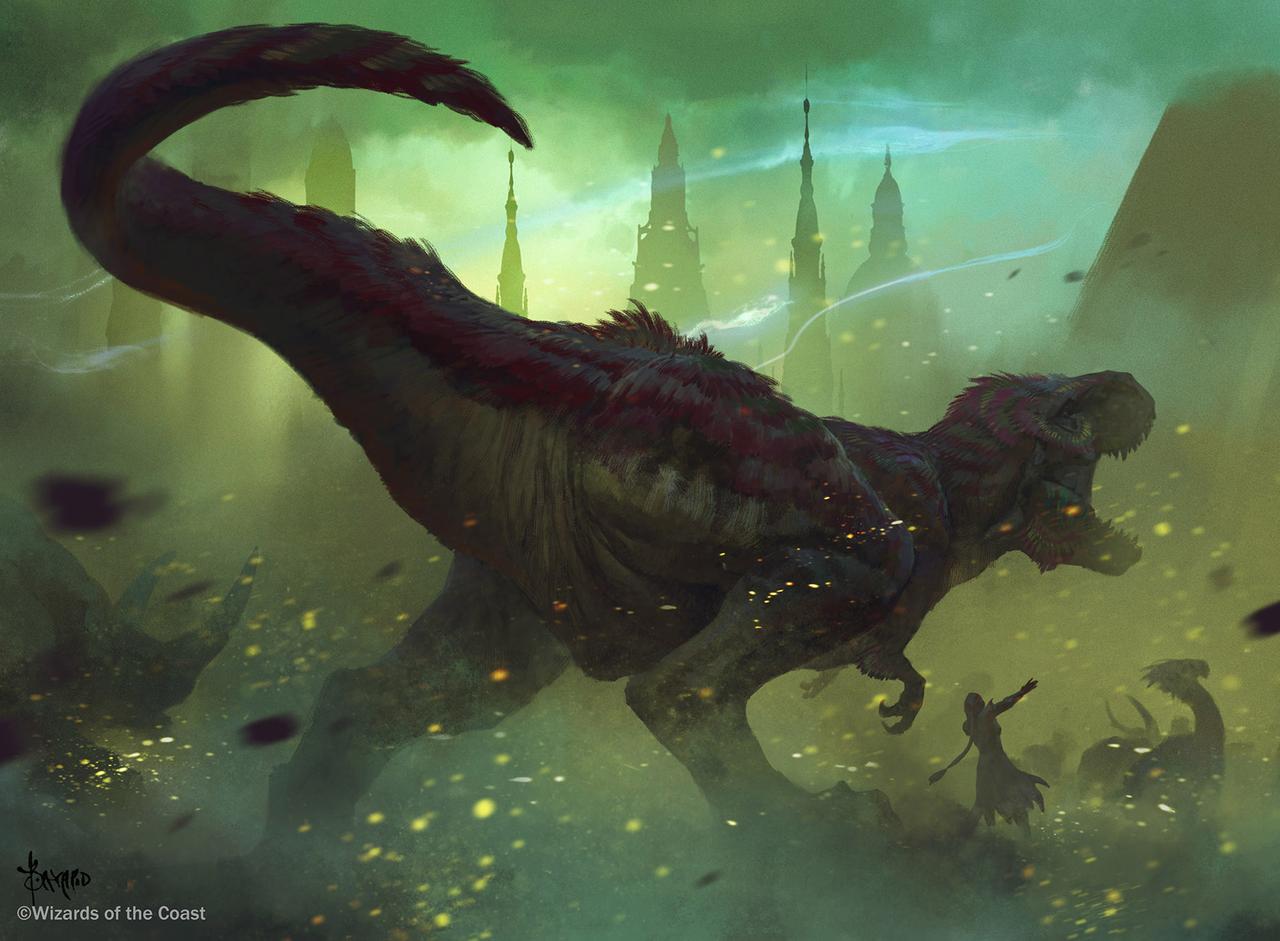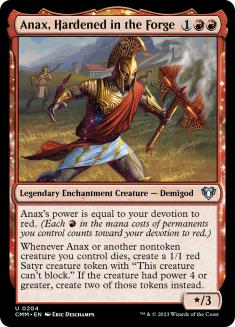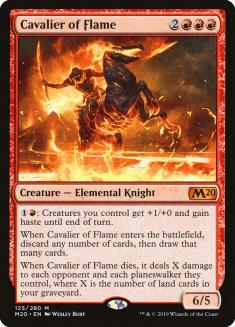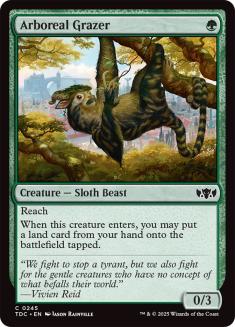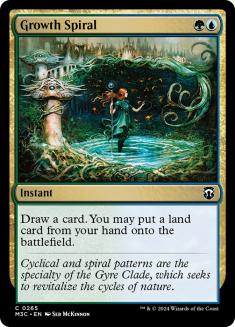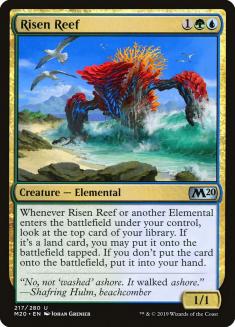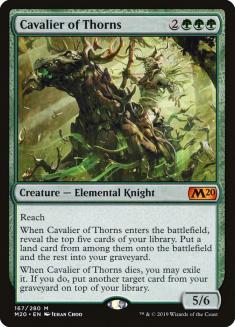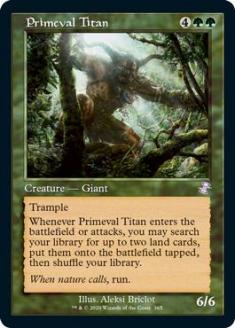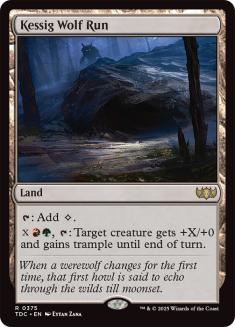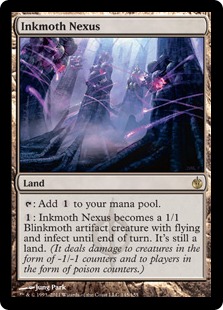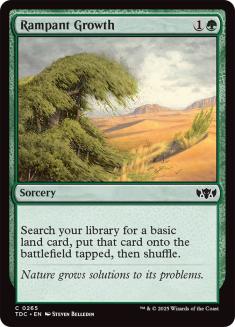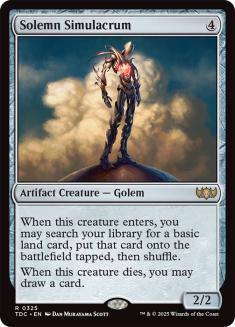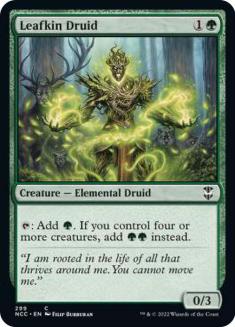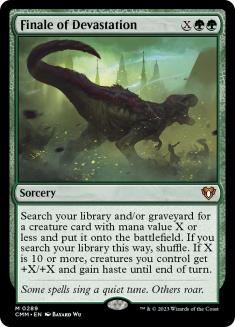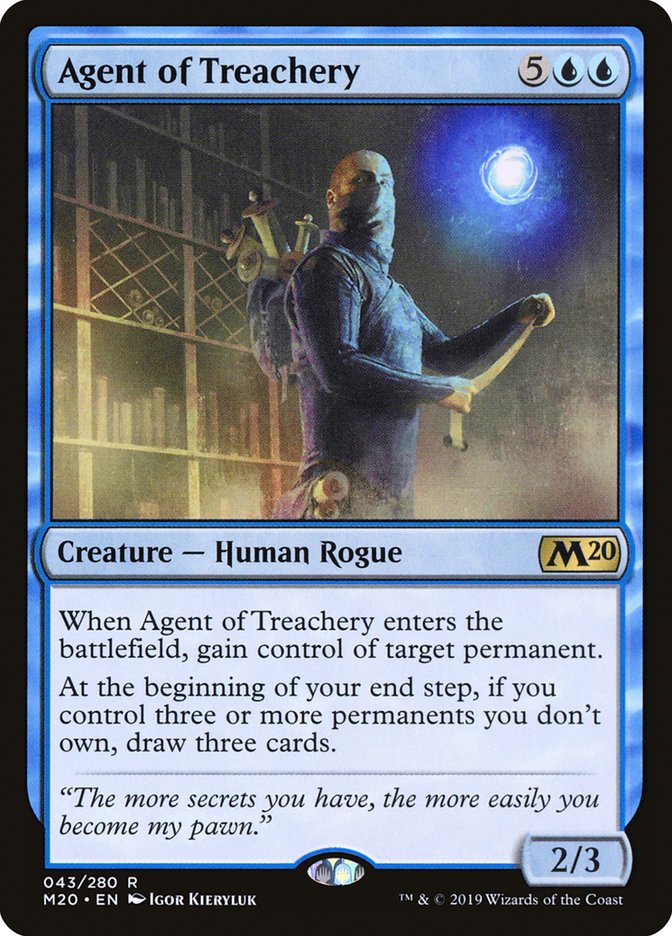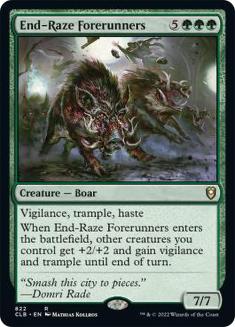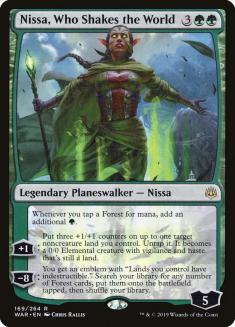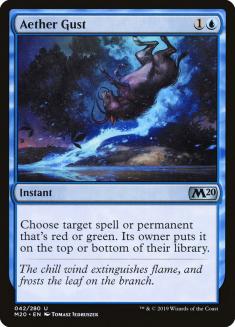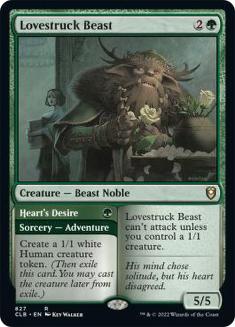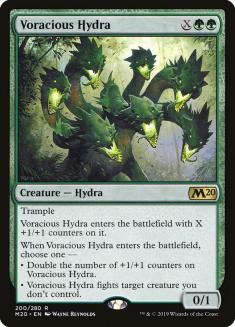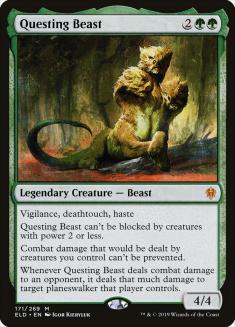It’s getting to the point in Theros Beyond Death Standard where things are starting to feel fairly solved. Sure, there isn’t a deck that’s head-and-shoulders above the rest of the pack, but most of the competitive decks in the format have more or less been discovered.
At this point in a format, it’s frequently best to remember what decks are available in a format, and what archetypes might not have seen much love since the most recent set was released.

One such archetype that I’ve had a ton of success with on ladder this week is my update to Simic Ramp:
Creatures (24)
- 4 Hydroid Krasis
- 1 End-Raze Forerunners
- 3 Arboreal Grazer
- 4 Risen Reef
- 1 Agent of Treachery
- 3 Leafkin Druid
- 4 Cavalier of Thorns
- 4 Uro, Titan of Nature's Wrath
Planeswalkers (1)
Lands (15)
Spells (20)

Why Simic Ramp?
Simply put: people are more interested in going over the top of each other than they are interacting. The decks trying to opt out of the proverbial go-bigger arms race? They’re doing it in the combat step:
Before Theros Beyond Death, Simic Ramp struggled against decks that applied too much early pressure; its catch-up mechanics were fairly mopey, and effectively came down to Hydroid Krasis doing its best Thragtusk impression. It didn’t have time to try to start looping Quasiduplicate with Cavalier of Thorns and Risen Reef to really get off the ground, and would die during its developmental stages. Now, there’s a much better card for Cavalier of Thorns to bin:
Holy Explores, Batman.
Uro, Titan of Nature’s Wrath is exactly the kind of card that Simic Ramp wanted. I’m not going to sit here and incinerate more than a dozen words or so explaining that cards that put lands onto the battlefield are good in ramp strategies, but seriously. The fact that the deck now has access to something that was doing what Quasiduplicate did for the deck before, while also having a more playable front half, is an enormous upgrade.
The list itself playing 29 lands is a result of the number of Explore effects in the deck. These effects have diminishing returns, but the first two or three are all incredible, especially considering that Arboreal Grazer and Growth Spiral both effectively cost a single mana. Grazer is naturally the weakest link here, but the card itself is more a curve consideration than anything else – and it isn’t because it’s a one-drop.
It’s because a chunk of the best cards in the deck cost three mana.
…and because the card that most of the archetype is built around is a five-drop.
Why is that relevant? It’s because ramp decks don’t curve in the same way as decks with a more traditional developmental plan.
Last time Primeval Titan was Standard-legal, it would grab Kessig Wolf Run and Inkmoth Nexus, and use the two to supercharge any threat drawn for the rest of the game, while threatening lethal from the lands area of the battlefield.
The way that it accomplished this was via a curve affectionately referred to as a two-four-six curve. On Turn 2, a two-mana ramp spell will put you to four mana on Turn 3, where a ramp spell will put you to six on Turn 4. Arboreal Grazer plays a similar role in this deck.
A good number of the Elemental-based ramp decks lean more on Leafkin Druid for ramp, and don’t have Arboreal Grazer. This leads to an uncomfortable number of situations in which you’re having to mulligan to two-drop ramp, with a deck that doesn’t mulligan particularly well.
Arboreal Grazer does a fantastic job of allowing Uro and Risen Reef to be more reliable sources of ramp on the draw. It also enables a one-three-five curve with Cavalier of Thorns and Nissa, Who Shakes the World. When the deck is built around Finale of Devastation, having the fives bridge further up the curve is a nice place to be.
When cards like Finale of Devastation get thrown into the mix, a common trap that people will fall into is loading up on different tutor targets. Despite having a few angles of attack, Simic Ramp is actually an incredibly linear deck, and I’ve landed on a couple of big finishers as my Finale package.
Most of the time, Finale of Devastation is trying to grab Cavalier of Thorns in hopes that Cavalier will rebuy a bigger Finale later on. Cavalier plays well enough with both Risen Reef and Uro that you aren’t priced into sandbagging it until there’s twelve mana on the battlefield.
One of the key differences between this iteration of Simic Ramp and last format’s is the lack of emphasis on Nissa. This is a direct result of the fact that Uro is a major part of the deck’s gameplan. This list sinks a ton of points into simply getting off the ground early and capitalizing on heightened card quality from there.
Protecting Nissa isn’t a given, and the actual 60-card maindeck is incredibly tight. This stems from the fact that this is the most linear version of Simic Ramp to date, and most of the cards are committed towards being early-game ramp, card draw, or payoffs. In practice, Nissa is closer to a payoff card that sends the deck to the stratosphere when things are already going well. Calling it a win-more feels disingenuous, but in terms of functionality, it isn’t that different. She isn’t doing that much in the game’s fail-states, and that’s a tough sell for me.
The Sideboard
Aether Gust is simply the most efficient way to catch up on the battlefield in matchups where the battlefield is a struggle. Mono-Red and Uro matchups are the biggest offenders here. In an infinitely long game, Simic Ramp will presumably come out ahead, so Aether Gust being a pseudo-Remand is at its best here.
When the plan is to simply overpower the cards that the opponent is playing, answering them isn’t a huge priority. Mystical Dispute is frequently going to be tagging other copies of Mystical Dispute or Teferi, Time Raveler. The ability to tag other cards is nice, but it’s generally better to frame this card as a Dispel // Gainsay split card.
Part of the anti-aggro plan. Outside of the typical “Adventures are card advantage” spiel, the way that Lovestruck Beast impacts the curve of the deck is incredible. Heart’s Desire provides a one-drop in a deck that sorely lacks ways to fill that part of its curve, while also replacing Risen Reef in sideboarding, which is historically rancid against decks that attack early.
The best way to attack planeswalkers, Questing Beast is one of the more flexible cards in the sideboard at the moment. Having a way to pressure the permanent card advantage engines of Bant and Azorius is great.
The most powerful way to answer problematic permanents is making use of them yourself. Agent of Treachery is at its best in matchups that struggle to double-spell, with Jeskai Fires and Bant Ramp being the biggest two nods here. The 1/1 split between the maindeck and sideboard may look lazy, but the idea is that the card is the best thing to be doing in more than one matchup. It’s worth having access to a virtual playset in sideboard games in those spots, with the second copy frequently slamming the door shut.
A mainstay in older go-big Simic decks, Voracious Hydra pulls its weight in the creature matchups. Think of it as a Ravenous Chupacabra that scales as a threat with natural progression of the game.
Matchup Plans
Most games are going to feature sideboarding in a few specific cards in order to account for how the opponent is trying to attack the specifics of the ramp deck. The transformational plan is the Simic deck planting itself as the grindy control deck, rather than simply ramping as much as possible. For example:
VS Mono-Red Aggro
Out:
In:
In this matchup, the deck cuts most of its spells that are committed to card advantage or going over the top. Instead, it’s putting its points into staying alive and assuming that Uro and Hydroid Krasis will be able to eventually close the door.
The thing to note about this plan when applying to your own sideboarding is the Finale of Devastation package. These cards aren’t always going to move together, but any matchup that forces Simic to emphasize mana efficiency is not going to be a matchup that favors a two-mana premium for the sake of selection in the mid- and late-game.
VS Azorius Control
Out:
In:
On the other side of the spectrum is the matchup that has nothing but time. Arboreal Grazer is the stains here for a few reasons: past the obvious “blocking doesn’t matter,” the acceleration it’s providing isn’t worth very much in this matchup. This means that it’s eating a card’s worth of raw material, without actually providing anything of value. In the slower, grindier matchups, Arboreal Grazer should be the first thing heading to the sidelines.
In a similar vein, Leafkin Druid isn’t providing much of substance other than being a mana source that dies to Shatter the Sky. On the draw, getting bounced via Teferi, Time Raveler feels even worse than that.
As long as you can check Narset, you’ll eventually have a Hydroid Krasis that puts the game out of reach for Azorius.
These two matchups encapsulate the extremes of the plans available to Simic Ramp. Both of them lean into the deck’s inevitability as part of its game plan, but emphasize whether development or card advantage is more important.
Things get hairier against decks where things aren’t so clear-cut. For example, Temur Adventures has its own sort-of combo finish, and can actually win out of nowhere if given enough time. This means simply trying to grind forever isn’t a winning strategy, even if the average card in Simic Ramp is more powerful than the average card in Temur Adventures.
VS Temur Adventures
Out:
In:
Against Temur Clover, it’s difficult to actually dilute the deck that much without compromising its ability to reliably close a game before the opponent. The idea here is to stick to Plan A, but leave some room for a bit of interaction on key turns.
This card comes out because it doesn’t always have the largest impact on games that devolve to who can charge and fire their cannon the fastest. Despite being fantastic at accruing incidental advantages over a long game and being a resilient threat, that isn’t what most of the games against Temur Adventures are about.
More frequently, players will trade resources for a bit until somebody either resolves an enormous Finale of Devastation or several copies of Granted from Fae of Wishes and Lucky Clover. This is why Uro is one of the first cards I reach for against Temur Reclamation as well.
Couple this lack of efficacy with the fact that Temur Adventures’s choice to use Brazen Borrower and Aether Gust as two of its primary sources of interaction, and it’s easy to see why Uro isn’t going to be shining in the matchup any time soon.
Three copies of Uro going to the sideboard isn’t an accidental number – when Finale of Devastation stays in the deck, I tend to avoid cutting every copy of Uro or Leafkin Druid. This is because there are games where these cards can shine as Finale of Devastation targets and the cost of leaving them in the deck is fairly low. Leaving a copy of Leafkin Druid in the deck in matchups where it’s lackluster, like Azorius Control, is largely to mitigate the possibility of tripping over both copies of Finale of Devastation in the early-game.
These are the kinds of thought processes that go into sideboarding with a two-plan deck that appears linear on its face. Figure out the structure of what your deck is capable of doing in the matchups of a format, and then frame your card selections and sideboard plans around that plan. Things fall into place much more quickly when you consider the impact of cards in a given gameplan and how you can best use the tools at your disposal to implement said plan.

